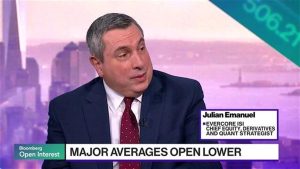
Producer prices rose less than anticipated in December, offering a potential reprieve for the Federal Reserve as it aims to bring inflation under control without derailing economic growth.
The data, released by the Bureau of Labor Statistics on Tuesday, showed the Producer Price Index rising 3.3% year-over-year, up from November’s 3% but below forecasts of a 3.4% increase. On a monthly basis, prices rose 0.2%, decelerating from November’s 0.4% and falling short of the 0.3% analysts had expected.
Driving the December rise in prices for final demand goods, gasoline prices surged 9.7%. Residential electric power, meats, motor vehicles, gas fuels and fresh fruits and melons also saw price increases. On the other hand, prices for fresh and dry vegetables dropped sharply by 14.7%, while carbon steel scrap and residual fuels also declined.
Core PPI, which excludes volatile food and energy costs, rose 3.5% annually in December, holding steady from November and coming in below expectations of 3.8%. On a monthly basis, core producer inflation flattened, decelerating from the prior month’s 0.2%, and below forecasts of a 0.3% rise.
The weaker-than-expected figures mark a departure from November’s data, which showed a surprise acceleration in producer inflation.
Why Producer Inflation Data Matters
The PPI is a key gauge of upstream price movements, often serving as a leading indicator for shifts in consumer inflation. Stronger producer price growth can signal relief for businesses and consumers, particularly if companies face less pressure to pass along higher input costs.
The moderation in monthly core PPI is especially notable, as it indicates that price pressures are less widespread across underlying components.
The timing of this report is critical, as it precedes Wednesday’s release of the Consumer Price Index.
Economists expect the December CPI to rise from 2.7% to 2.9% annually, while core inflation is forecast to hold steady at 3.3%. The softer PPI data may temper concerns of a significant upside surprise in consumer inflation, offering hope that the Federal Reserve’s 2% target remains achievable.
Market Reactions
The cooler-than-expected PPI report provided some relief to markets, which have been grappling with uncertainty over the Fed’s policy direction.
According to CME Group’s FedWatch tool, expectations for rate cuts in 2025 ticked slightly higher following the report.
Markets are now pricing in rising likelihoods of one 25-basis-point cut by the end of the summer.
Treasury yields slightly fell in response to the data. The two-year yield, which is particularly sensitive to Fed policy expectations, dropped 2 basis points to 4.37%. The dollar weakened modestly, with a key index tracking the greenback holding steady during the session.
Stock futures were higher in premarket trading. Contracts on the S&P 500 edged up 0.5%, while Nasdaq 100 futures rallied 0.9%.
On Monday, the SPDR S&P 500 ETF Trust SPY rose 0.1%, touching levels last seen on Nov. 5, 2024, the day before the U.S. presidential election results were announced.
Read Next:
Photo via Shutterstock.
Market News and Data brought to you by Benzinga APIs
© 2025 Benzinga.com. Benzinga does not provide investment advice. All rights reserved.

